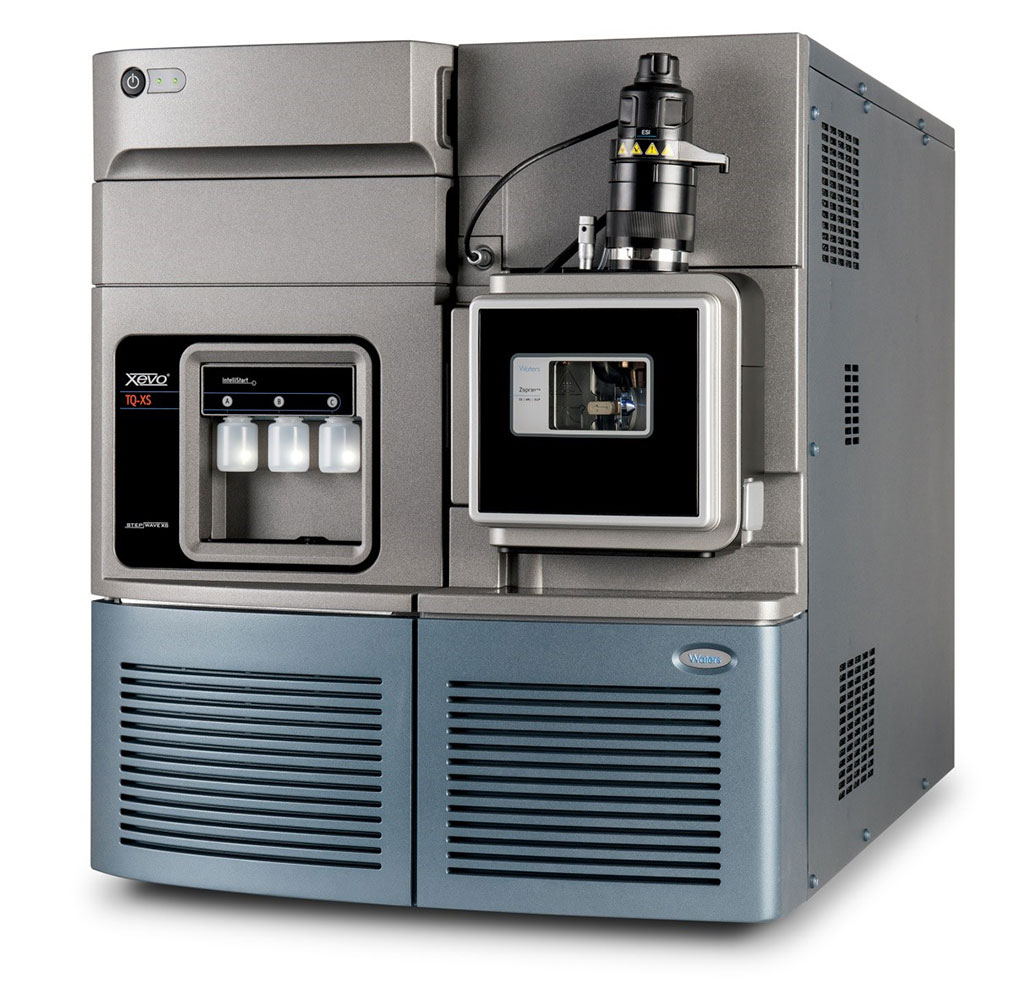Low Serotonin Levels Associated with Higher Nigral Iron in Parkinson’s Disease
By LabMedica International staff writers
Posted on 17 Jan 2022
Parkinson’s disease (PD) is a neurodegenerative disorder characterized clinically by bradykinesia, rigidity, and/or tremor and pathologically by dopaminergic neuron loss in the substantia nigra pars compacta (SNc) and the presence of ⍺-synuclein-containing inclusions in cell bodies or neurites (Lewy pathology).Posted on 17 Jan 2022
Iron accumulation in the brain is common with aging and consistently reported to be increased in PD, particularly in the substantia nigra (and specifically the SNc). Low serotonin is thought to contribute to the high rate (~ 35%) of clinically significant depression, an often prodromal symptom, among patients. Lower CSF serotonin also has been associated with freezing of gait.

Image: The Water’s Xevo triple-quadrupole mass spectrometry (TQ-S MS/MS) system (Photo courtesy of Duke University)
A team of Neurologist at Pennsylvania State University (Hershey, PA, USA) and their associates investigated whether lower plasma serotonin in PD is associated with higher nigral iron. They obtained plasma samples from 97 PD patients and 89 controls and MRI scans from a sub-cohort (62 PD, 70 controls).
For analysis of peripheral serum iron metrics (red blood cell count, hemoglobin, hematocrit, serum iron, transferrin, total iron binding capacity (TIBC), transferrin saturation) and platelet counts, blood was collected into a BD PST II plasma separator tube (Becton, Dickinson and Company, Franklin Lakes, NJ , USA), and analyzed by using standard assays.
Plasma serotonin concentrations were measured using an Acuity ultra-high-performance liquid chromatography (UPLC) I class and Xevo triple-quadrupole mass spectrometry (TQ-S MS/MS) system (Waters, Milford, MA, USA). Brain MRI scans were offered to all subjects, but completed by only a subset (70 controls, 62 PD patients) and were used for regional iron content using MRI-based quantitative susceptibility mapping.
The investigators reported that PD patients had lower mean plasma serotonin concentrations than controls [in log scale, 5.53 ± 1.40 versus 6.25 ± 0.85, P < 0.0001] and higher nigral iron content (SNc: p < 0.001) overall. The correlation appeared strongest in patients during the first year of diagnosis but waned in later stage disease, when an increasing number of influences on these features presumably come into play. However, the PD distribution appeared distinctly bimodal, and the group difference was driven by approximately one-third of patients with extremely low concentrations (the lowest tertile, n = 32; < 150 nM). In the remaining two-thirds of PD patients, plasma serotonin concentrations were distributed relatively widely and within the normal range of controls.
The authors concluded that there was a robust correlation between low plasma serotonin and higher iron content in the SNc in PD, which was absent in controls. This correlation was present even in patients within one year of diagnosis, suggesting it might also be present in the prodromal phase, and was stronger in the SNc than any other brain region examined. The study was published on December 21, 2021 in the journal Scientific Reports.
Related Links:
Pennsylvania State University
Becton, Dickinson and Company
Waters













